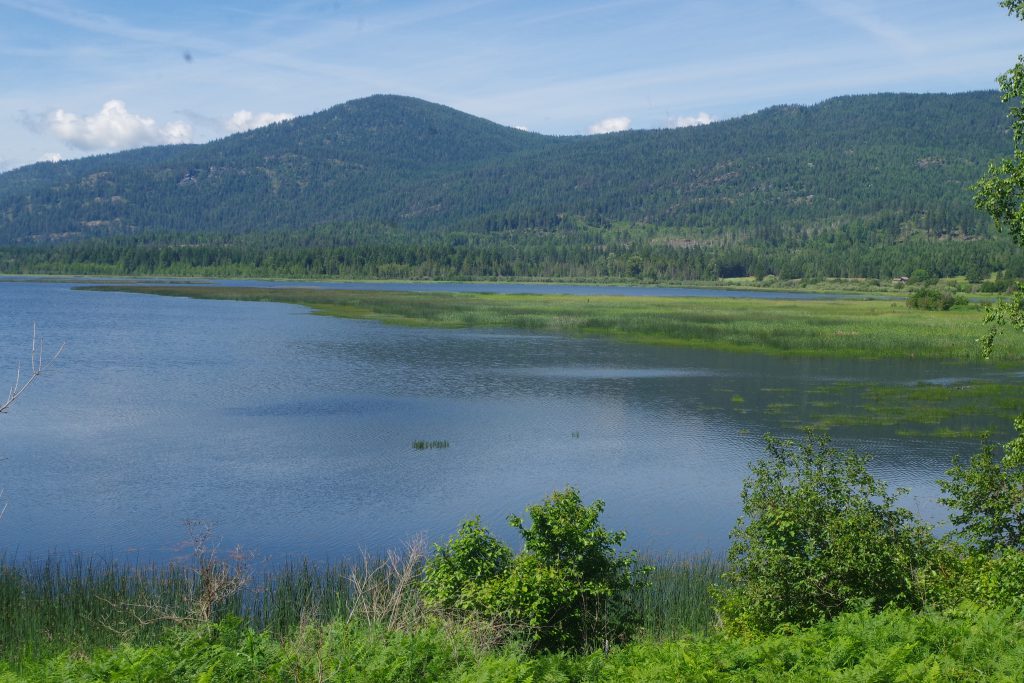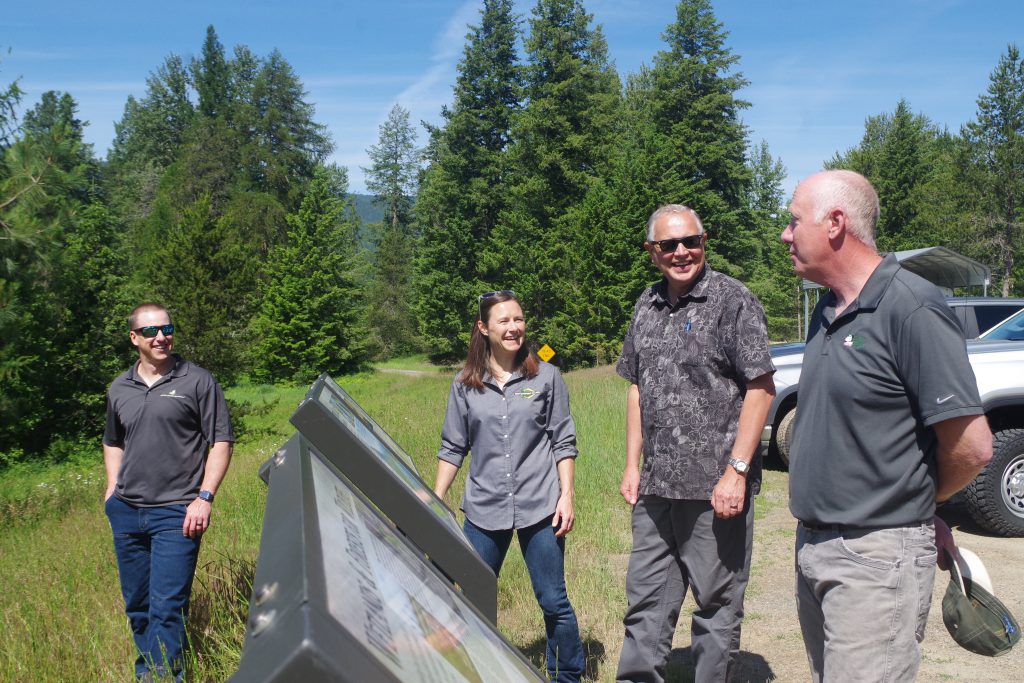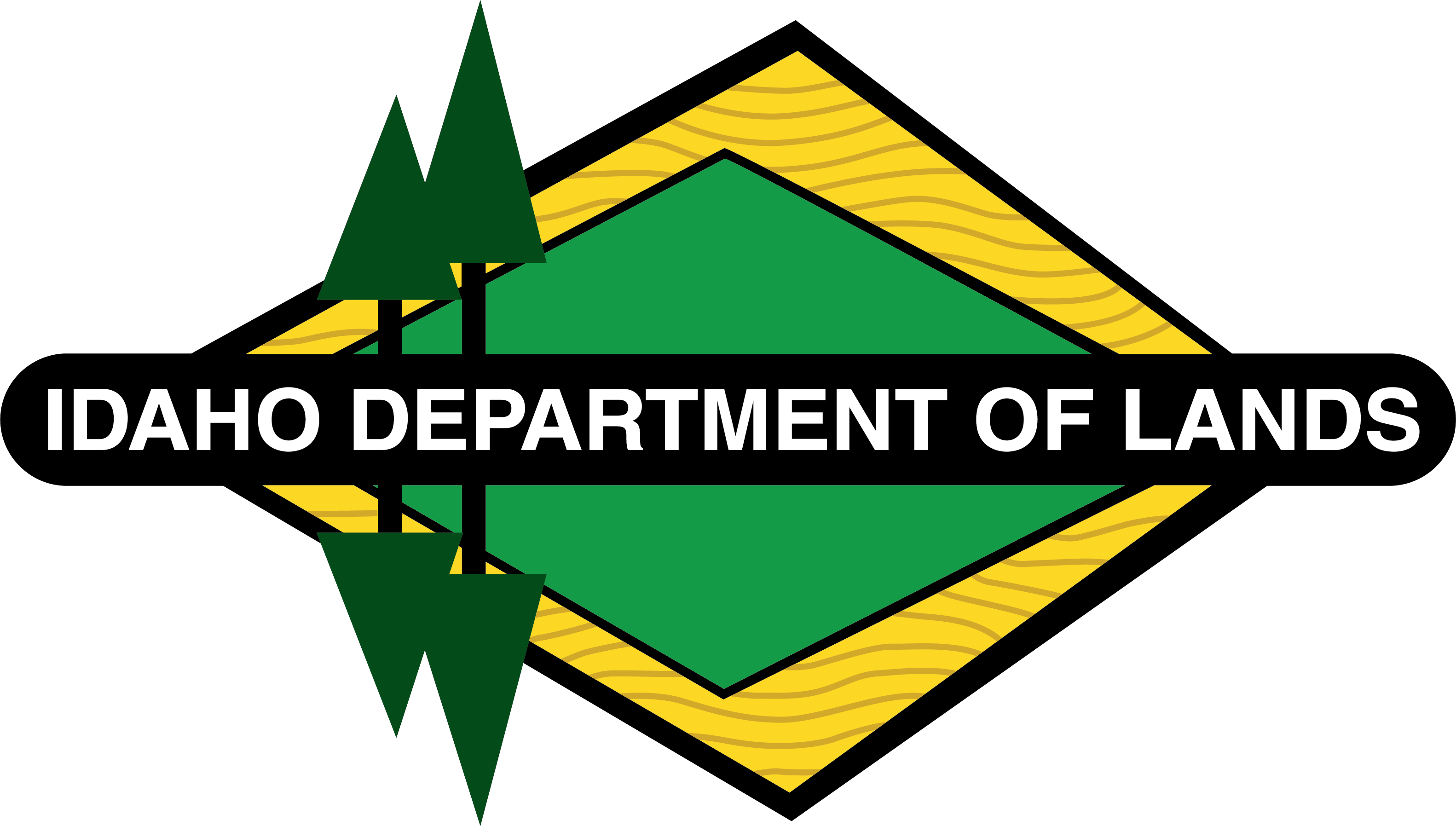Ten Years in the Making
Forest legacy easements at McArthur Lake provide wildlife, recreation, timber industry benefits in perpetuity.
By Steve Stuebner

On a warm summer day at dawn, the surface of 600-acre McArthur Lake is absolutely still, acting like a mirror, reflecting the beautiful, towering mountains above. Ospreys fly overhead looking for a morning meal, and songbirds crackle with life at the water’s edge.
Looming above McArthur Lake Wildlife Management Area, the Cabinet and Selkirk Mountains wake up to golden light filling the timbered slopes for another day of activity. Logging crews scale the mountain to harvest locations and fire up the equipment while log trucks file into the area, waiting to haul logs to the local sawmills.
Local outdoorsy folks out for a morning ride climb the mountains on motorbikes as part of a 50-mile tour, where they might see white-tailed deer, Rocky Mountain elk, maybe even a black bear. Later in the summer, berry-pickers will be out in force, collecting fresh huckleberries for home-made jam and garnish for ice cream. In the fall, hunters will flock to the woods in force to pursue wild game. Photo by Steve Stuebner
Here, in the mountains surrounding McArthur Lake WMA, a major conservation achievement occurred between the Idaho Department of Lands (IDL) and three timber companies to create more than 18,800 acres of open space with guaranteed public access through IDL’s Forest Legacy Program (FLP). A series of deals completing the FLP easements was completed in late 2019. About $12 million in FLP funds and $1.5 million in partner grant funds made the purchases possible.
Ten years in the making, the objective of the project was to keep “working forests working,” while knitting together checkboard-ownership of private lands with state endowment trust lands to provide open space for moose, elk, deer and bears to travel a between the Cabinet Mountains to the east and the Selkirk Mountains to the west via a narrow valley, known as the “Purcell Trench,” surrounding the McArthur Lake WMA.

“We sold our development rights to these lands, and that allows us to keep working forests working,” said Scott Ketchum, General Manager of the Northern Inland Division for Hancock Natural Resource Group, one of the three timber companies involved in the conservation project. “This project also protects wildlife habitat, clean air, jobs and wood and paper products for our local community. It also ensures perpetual public access into the future.”
Stimson Lumber Company and Molpus Woodlands Group are the other two timber companies that granted conservation easements to the State of Idaho through the Forest Legacy Program. Another timber company that was involved early on, Forest Capital Partners LLC, has since sold their holdings to Hancock and Molpus. The Nature Conservancy and the Trust for Public Lands have been involved in the project since the beginning, teeing up the conservation easements for IDL to acquire via the federal Land and Water Conservation Fund.
“We’re really proud of this project; we really are,” adds Barry Dexter, Director of Inland Resources for Stimson Lumber Company.
“It’s a huge conservation success story,” adds Kennon McClintock, Field Representative for The Nature Conservancy in Moyie Springs. “It’s a win for the community, our wildlife, the economy and water quality. You keep the forests intact, you keep the water clean.”
Another important aspect of the FLP easements is that Hancock, Stimson and Molpus will continue to own the land and pay taxes to Boundary and Bonner counties.
“Our Legacy program only purchases the conservation easements, so the land stays in private hands, and the private landowners continue to pay property taxes, which protects the local tax base for roads, schools, emergency services and other community needs,” said Karen Neorr, Forest Legacy Program Coordinator for IDL in Sandpoint.
Keeping the private timberlands in operation for timber production is crucial for the local sawmills, officials said. “Seventy to eighty percent of the timber supply for the local mills comes from private lands,” says McClintock, who worked in the timber industry for many years prior to joining TNC. “Those lands are crucial to maintain for our local economy and community stability.”

McClintock remembers talking with USDA Forest Service officials about the value of the private timberland holdings as a travel corridor for wildlife, primarily moose, elk and deer in the 1980s and 1990s. “We had a lot of wildlife getting killed on the highway, so we knew that it seemed to be a place where the wildlife were crossing the highway,” he said.
Chip Corsi, Regional Supervisor for the Idaho Department of Fish and Game in Coeur d’Alene, notes that the Purcell Trench is a very narrow – and busy – patch of open space in between the two major mountain ranges. The state’s primary north-south highway, U.S. 95, passes through the gap along with two railroad lines running in parallel. IDFG is working with the Idaho Transportation Department to make the highway corridor safer for drivers and wildlife by the McArthur Lake WMA.

The Purcell Trench also lies in between designated grizzly bear recovery zones in the Selkirks and the Cabinets. The Selkirk Range extends north into Canada, and the Cabinets run across the border into Yaak country in Northwest Montana. “Having the connectivity between the two recovery zones is helpful,” Corsi says. “It’s important to have places where the bears can move out and about without getting into trouble.”
The FLP conservation easements allow IDL, Molpus, Hancock and Stimson to continue forest management activities in the area in perpetuity. In the case of IDL lands, continued forest management activity will provide a steady flow of timber to local sawmills, providing jobs and income for local people, and income for the Idaho State Endowment Fund and Idaho public lands.
“Timber is our bread and butter,” says Chad McElvany, Operations Director for Molpus Woodlands Group in Coeur d’Alene. “For the Forest Legacy Program to keep working lands working alleviates the pressure on us to sell the lands. Instead, we can manage our lands for timber management into the future.”
Maintaining the timber base is also important to Stimson Lumber Company, Dexter says. “Our forests come first, ensuring that we have a flow of timber to our sawmills.”
Overall, statistics from the University of Idaho Policy Analysis Group shows that forestry activities in Bonner County provide $37.2 million in wage income, along with 700 jobs, keeping 50 logging companies busy and supplying eight sawmills with logs to be processed into wood products. In Boundary County, forest management activities provide $27 million in wage income, along with 515 jobs, keeping 30 logging companies busy and supplying five sawmills with logs to be processed into wood products.
The Forest Legacy conservation easements deal came along just in time to prevent more subdivisions and development pressure from eating up valuable wildlife habitat and timber-production lands, officials said. The beauty of open space, relatively cheap land and less people is drawing record numbers of newcomers to North Idaho. Once lands are subdivided into smaller tracts, they lose their value as wildlife habitat and also are more likely to be uneconomical to grow and harvest timber, officials said.

Left to right, Chad McElvany, Molpus Woodlands Group, Karen Neorr, Idaho Department of Lands, Barry Dexter, Stimson Lumber Company, and Scott Ketchum, Hancock Natural Resources Group, discuss the Forest Legacy Easements at the McArthur Lake Wildlife Management Area, north of Sandpoint. Photo by Steve Stuebner
All parties agree that keeping the forestlands for open space, recreation and timber management will provide long-term benefits. All of the lumber produced from the wood products on private timberlands are stamped with the seal of best practices via the Sustainable Forestry Initiative (SFI) or the Forest Stewardship Council (FSC), which ensures that forest management practices are done on a sustainable basis, confirmed by third-party independent audits.
That means the forests will be managed in a way that wildlife will continue to thrive.
“The timberlands are compatible with charismatic megafauna,” Corsi says. “They will be open space in perpetuity, and that open space provides a safe refuge for wildlife.”
“Thirty to 40 years from now, people will be grateful that we did this,” adds McClintock.
Steve Stuebner is a professional writer who specializes in conservation success stories. This story was made possible by a grant from the national Land Conservation Assistance Network www.landcan.org.

